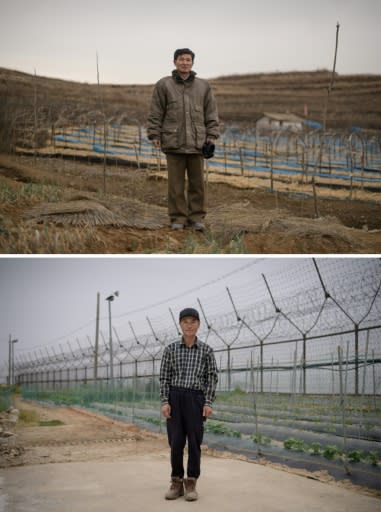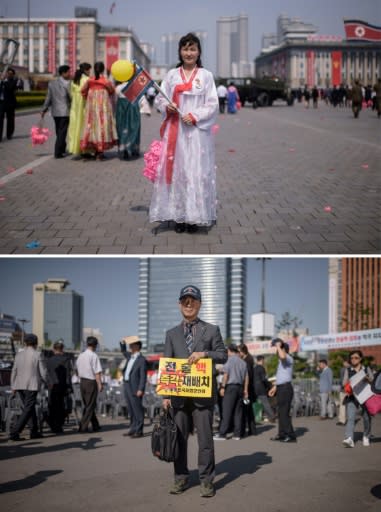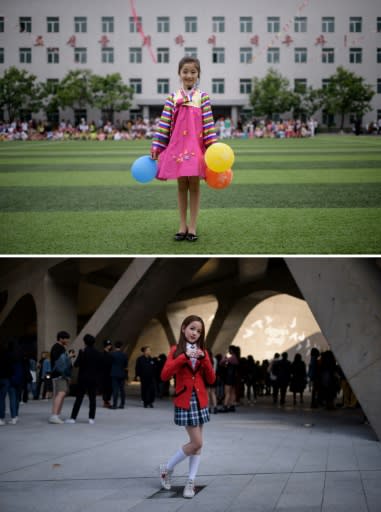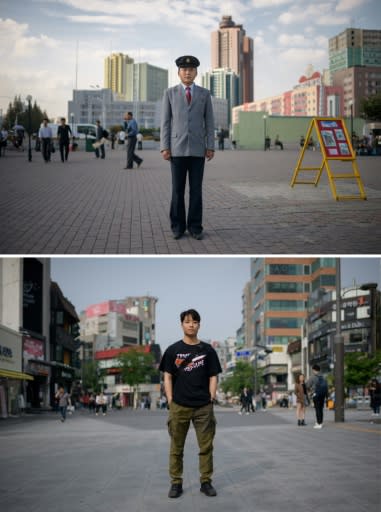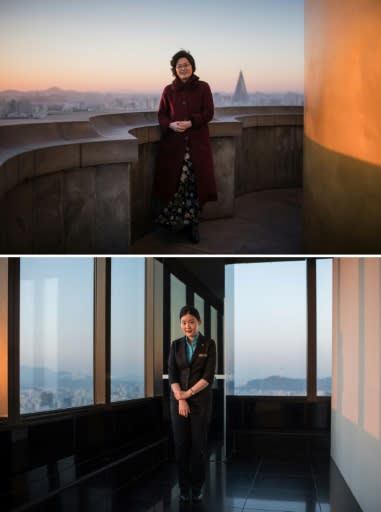Parallel lives: opposites and echoes either side of Korea's DMZ
On either side of the Demilitarized Zone that divides the Koreas, a soldier stares at the camera, the emblematic blue huts of the truce village of Panmunjom behind him. Seoul's President Moon Jae-in will fly straight to Pyongyang on Tuesday for his summit with the North's leader Kim Jong Un -- but for ordinary citizens of both countries, travel between them is banned. The two soldiers at Panmunjom were standing less than 100 metres apart, but getting from one location to the other would require a journey of more than 2,000 kilometres, via China. The images are one of a series of paired portraits taken by AFP photographer Ed Jones in the two countries, one of them a capitalist democracy and the other an isolated, nuclear-armed state. From farmers, factory workers and petrol attendants to tour guides, shoppers and schoolchildren, the photographs highlight the visual similarities and differences between the two societies and their peoples. Reflecting the countries' geographical locations, the Northern portrait is always the top of the pair. AFP is one of only a handful of international news organisations to operate a bureau in Pyongyang, giving it unusual access to the isolated country -- Seoul-based Jones is the only photographer living in the South who regularly visits the North, giving him a unique perspective on the two. "It's less about the technical aspects of the picture and more about the access," said Jones. "It's a rough style of photography which is more about the story of the two countries. "You can put the pictures side by side but the people can't stand side by side in real life and there's something inherently captivating about that." Lieutenant Kim (top) and Corporal Woo (bottom) pose for portraits on either side of the Panmunjom truce village Hong Kum Ju (top) at the food factory where she works near North Korea's eastern port city of Wonsan, North Korea, and Kim Si-eun (bottom) at the Spam factory where she works in Jincheon, south of Seou North Korean ginseng farm manager Kim Young Guk (top) and South Korean farmer Hwang In-suk (bottom) Ri Kum Hui (top) poses after a military parade and mass rally in Pyongyang, and retired rear-admiral Park Sae-hun (bottom) at a protest in Seoul to demand the redeployment of US tactical nuclear weapons in South Korea Kim Song Jong (9, top) after a dance performance at a Children's Day event in Pyongyang, and Yoon Hyerim (10, bottom) after a dance performance at Dongdaemun Design Plaza during Seoul Fashion Week Students Pak Kum Ryong (23, top) in Pyongyong and Lim Jun-beom (24, bottom) in Seoul Ri Song Hui (21, top) at the Munsu Water Park in Pyongyang and Kwon Ye Seul (30, bottom) at the Carribean Bay water park south of Seoul Han Gwang Rim and his daughter Su Ryon (top) at a supermarket in Pyongyang, and Hong Sung-cho (bottom) with son Hong Jinu at a supermarket in Bundang near Seoul North Korean tour guide Choi Hee Ok (top) at the viewing deck of the landmark Juche Tower in Pyongyang, and South Korean tour guide Bang Sung-hee (bottom) at the viewing deck of the landmark 63 Building in Seoul



